The AMD Ryzen 9 3950X Review: 16 Cores on 7nm with PCIe 4.0
by Dr. Ian Cutress on November 14, 2019 9:00 AM ESTGaming: Grand Theft Auto V
The highly anticipated iteration of the Grand Theft Auto franchise hit the shelves on April 14th 2015, with both AMD and NVIDIA in tow to help optimize the title. GTA doesn’t provide graphical presets, but opens up the options to users and extends the boundaries by pushing even the hardest systems to the limit using Rockstar’s Advanced Game Engine under DirectX 11. Whether the user is flying high in the mountains with long draw distances or dealing with assorted trash in the city, when cranked up to maximum it creates stunning visuals but hard work for both the CPU and the GPU.
For our test we have scripted a version of the in-game benchmark. The in-game benchmark consists of five scenarios: four short panning shots with varying lighting and weather effects, and a fifth action sequence that lasts around 90 seconds. We use only the final part of the benchmark, which combines a flight scene in a jet followed by an inner city drive-by through several intersections followed by ramming a tanker that explodes, causing other cars to explode as well. This is a mix of distance rendering followed by a detailed near-rendering action sequence, and the title thankfully spits out frame time data.
There are no presets for the graphics options on GTA, allowing the user to adjust options such as population density and distance scaling on sliders, but others such as texture/shadow/shader/water quality from Low to Very High. Other options include MSAA, soft shadows, post effects, shadow resolution and extended draw distance options. There is a handy option at the top which shows how much video memory the options are expected to consume, with obvious repercussions if a user requests more video memory than is present on the card (although there’s no obvious indication if you have a low end GPU with lots of GPU memory, like an R7 240 4GB).
All of our benchmark results can also be found in our benchmark engine, Bench.
| AnandTech | IGP | Low | Medium | High |
| Average FPS | 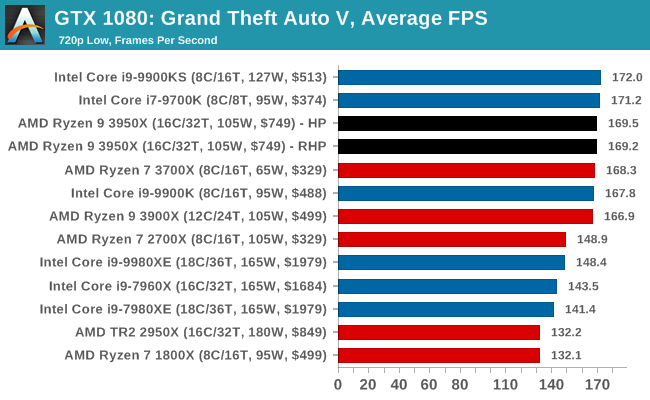 |
 |
 |
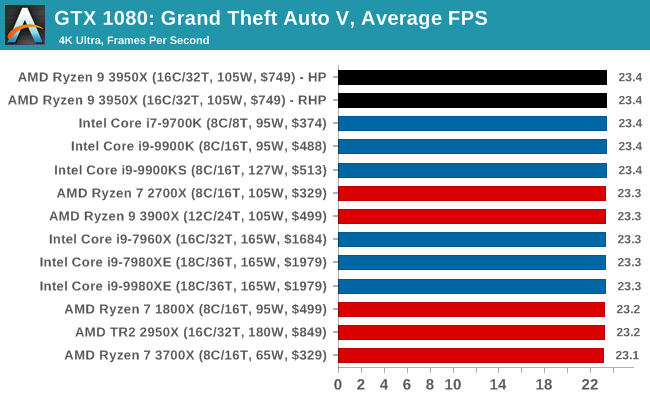 |
| 95th Percentile | 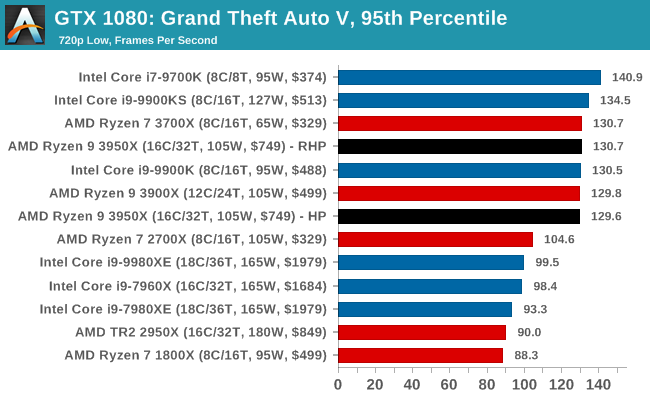 |
 |
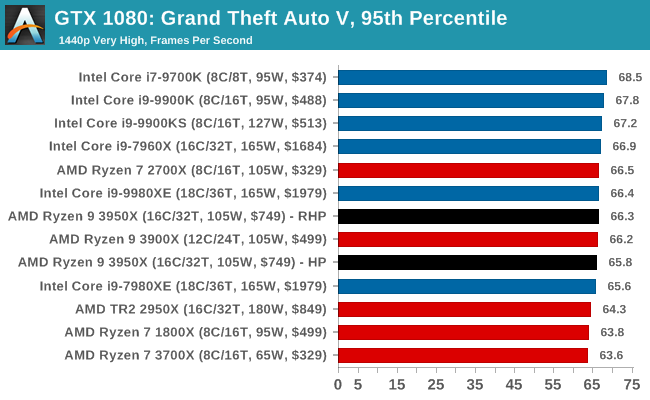 |
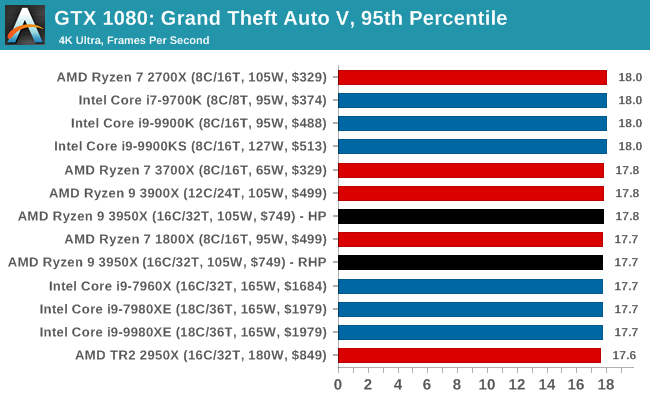 |












206 Comments
View All Comments
bigboxes - Friday, November 15, 2019 - link
derpAlexvrb - Friday, November 15, 2019 - link
As the review points out, it's also hard to measure burst frequency. The harder you try, the more you skew the result, too. The CPU could very well be hitting 4.7 briefly in variable workloads on the hot core... although maybe other samples hit it more often or for slightly longer periods of time.III-V - Thursday, November 14, 2019 - link
For real. It's the performance that matters, not some number with zero real world meaning.Marlin1975 - Thursday, November 14, 2019 - link
Wow thats a lot of CPU for not much when you compare it against the competition and how much others cost.I am surprised the dual channel memory does not hold it back more.
Foeketijn - Thursday, November 14, 2019 - link
That's exactly what I was thinking. An incredable feat to score about double compaired with a 3700x, with twice the cores, twice the power envelope but the same memory bandwidth. What are those embedded Epyc chips (3000 series) doing with quad channel DDR4?brantron - Thursday, November 14, 2019 - link
Zen 1 and Broadwell have higher memory bandwidth than Skylake-X at low thread counts.Broadwell D is still updated almost annually High memory bandwidth at low power is apparently somebody's thing.
https://www.anandtech.com/show/11544/intel-skylake...
Silma - Thursday, November 14, 2019 - link
Based on you geomean chart, it looks like on 7nm, Intel chips would destroy AMD's, and there's a real possibility Intel's 10 nm chips will be competitive in price & superior in performance if Intel prices them to compete.Silma - Thursday, November 14, 2019 - link
Anyway, congrats to AMD and thanks for heating the competition again.naxeem - Thursday, November 14, 2019 - link
Intel can't really do much. They have nothing in the pipeline.Teckk - Thursday, November 14, 2019 - link
Destroy is probably too strong? AMD will be on TSMCs 5 nm plus their new designs so they'll mostly be on par or in the same situation as today.